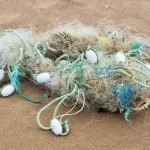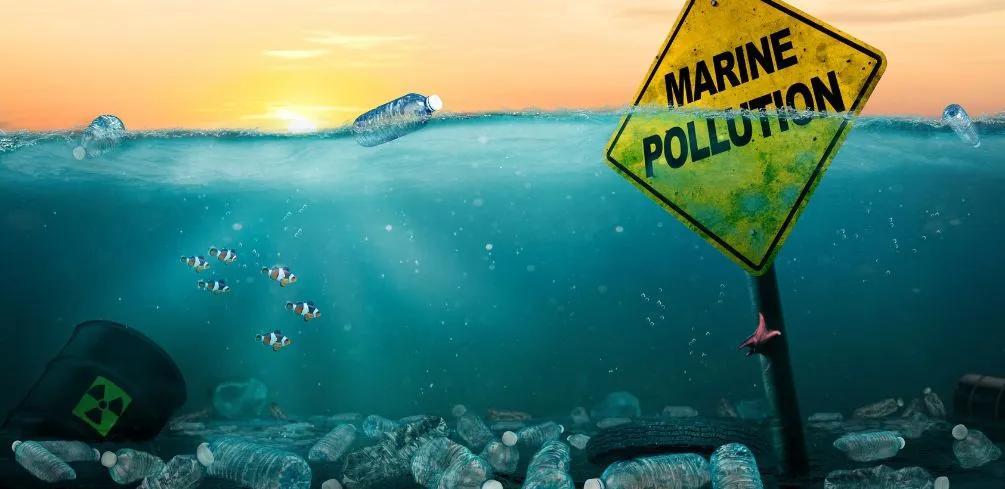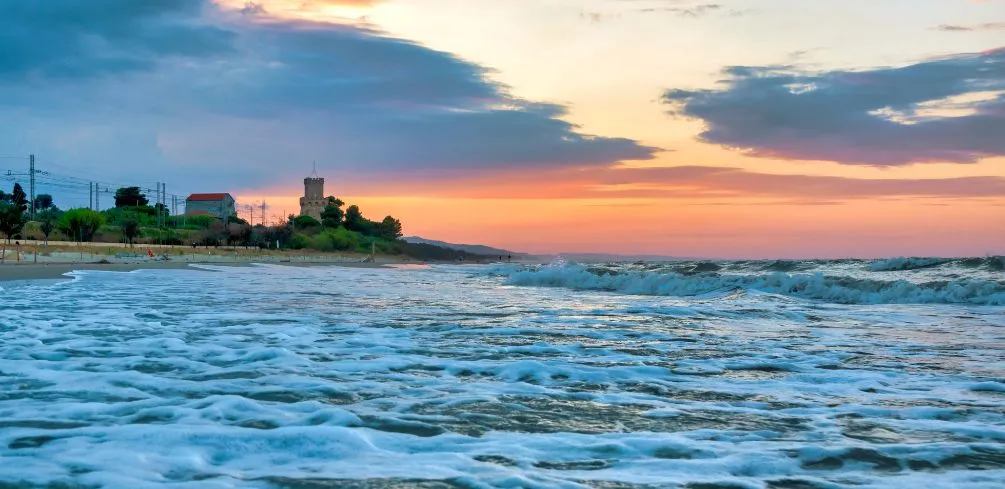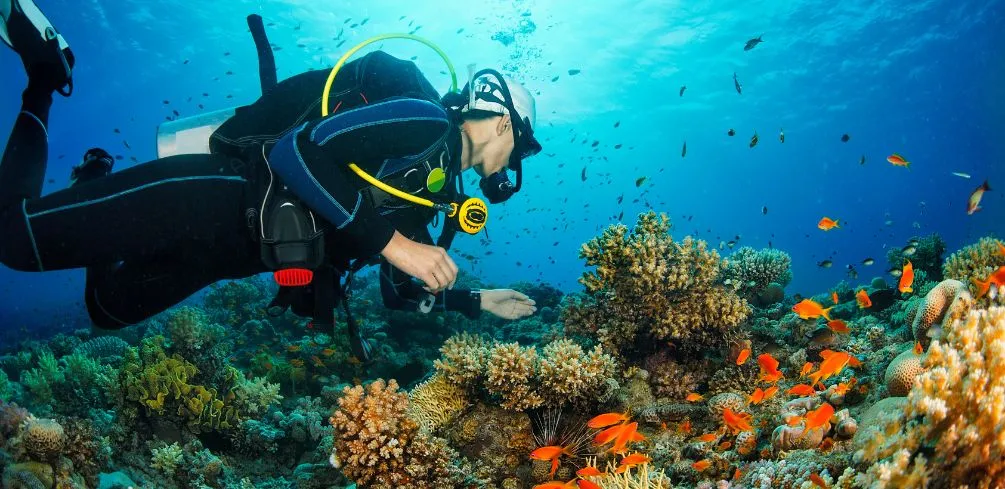Sustainable fishing practices are vital for protecting our ocean ecosystems and ensuring the health of marine life. But why should we invest in sustainable fishing? I’m here to explore the potential benefits that can be gained from sustainable fishing practices.
Let’s start by taking a look at how sustainable fishing can help to protect marine wildlife and maintain the delicate balance of our oceans. By using traditional, low-impact methods of fishing, such as handline or pole-and-line, fishermen can ensure they only take what they need while avoiding overfishing, which can have devastating effects on fish stocks and fragile coral reefs. This helps to keep our oceans healthy and full of life.
Finally, let’s consider the economic benefits of investing in sustainable fishing practices. Not only does it enable fishermen to stay in business for longer by helping them catch more fish with less effort, but sustainable fisheries also provide a valuable source of income for coastal communities that rely on the seafood industry for their livelihoods.
In this article, I’ll be delving deeper into these topics to investigate just how beneficial, sustainable fishing can be – both environmentally and economically.
Meaning Of Sustainable Fishing
Sustainability is a concept that has become increasingly prevalent in our world today. In the fishing industry, sustainable fishing practices are defined as techniques and methods that allow for fish populations to be managed in a way that conserves their numbers and habitats. To put it simply, sustainable fishing is the practice of harvesting fish at levels that do not cause environmental damage or deplete natural resources.
To understand what this looks like in practice, let’s look at some common sustainable fishing practices. One of these is to ensure that the size and number of catches are appropriate for the species being harvested.
This helps maintain healthy breeding stocks, which ensures enough fish will be available for future generations. Another practice is to limit bycatch, which occurs when an unintended species are caught during commercial fishing operations. Bycatch can harm other species or disrupt ecosystems if left uncontrolled.
Finally, fishermen are encouraged to use eco-friendly gear such as nets made from biodegradable materials and lines with circle hooks instead of traditional J-hooks, which can injure and kill marine life if discarded improperly.
These practices form the foundation of sustainable fisheries management; they allow us to responsibly harvest aquatic resources while preserving our environment for future generations. By learning more about sustainable fishing and implementing its principles into our lives, we can ensure that our oceans remain healthy and productive for years to come.
Overview Of Current Practices
Now that we’ve looked at the definition of sustainable fishing let’s take a look at how it is currently practiced.
The goal of sustainable fishing is to ensure that resources are conserved and managed responsibly. To do this, many countries have put in place regulations and controls to limit overfishing and protect vulnerable species. This includes introducing quotas, setting catch limits, implementing closed seasons, and limiting the size of boats allowed to fish in certain areas.
In addition, other sustainable fishing methods are also used. For example:
- Aquaculture systems are used for farming fish in a controlled environment allowing for better resource management.
- Bycatch reduction techniques, such as using trawl nets with escape hatches or biodegradable panels, can help reduce the number of unintended catches of non-target species.
- Gear modification techniques like circle hooks can help reduce mortality rates by encouraging the live release of non-target species instead of discarding them dead overboard.
These measures all come together to create a more balanced relationship between humans and nature so that future generations can continue to benefit from healthy marine ecosystems. We must continue our efforts to promote responsible usage while still enjoying the rewards that come with seafood consumption.
Economic Benefits Of Sustainable Fishing
I’m sure by now, we all know the importance of sustainable fishing practices. It’s not only beneficial to the environment, but it also has many economic benefits. This section will focus on the economic sustainability of sustainable fishing and how it can create financial gains for fisheries.
The cost of sustainable fishing is usually higher than traditional fishing methods, but this cost is often offset by the long-term savings and benefits that come with it. Sustainable fishing practices allow for more fish to be caught in a shorter amount of time, resulting in higher profits for fisheries.
Additionally, using sustainable methods helps to conserve fish stocks, meaning fishermen can continue catching more fish over a longer period of time without having to worry about overfishing.
There are also other economic benefits associated with sustainable fishing, such as increased productivity and less wastage. By reducing waste and increasing productivity, fishermen are able to maximize their profits from each catch and continue bringing in a steady income from their investments in sustainable practices.
In addition, sustainable fishing practices help protect marine ecosystems, increasing ocean biodiversity and contributing positively to the global economy.
So far, we’ve seen how there are both environmental and economic benefits associated with sustainable fishing practices and how these can result in significant financial gains for fisheries. These gains should not be overlooked when considering whether or not to invest in these practices, as they can provide long-term returns that outweigh any initial costs incurred.
Environmental Benefits Of Sustainable Fishing
Sustainable fishing practices are like a breath of fresh air for the health of our oceans and marine habitats. Not only do these practices protect our sustainable fish stocks, but they also have an undeniably positive effect on the overall ocean ecosystems.
By employing these techniques, we can ensure that not only will our fish stocks remain healthy and plentiful but that the environment around them will remain undamaged as well.
Firstly, sustainable fishing techniques help reduce levels of water pollution, which is essential in order to maintain a healthy marine habitat and preserve delicate biodiversity. For example, certain types of nets are designed to prevent bycatch species from being caught unintentionally; this helps to reduce the amount of unwanted waste entering our oceans.
In addition, many fishing boats now employ eco-friendly engines in order to reduce their emissions, meaning fewer harmful chemicals enter the waters surrounding them.
Furthermore, using sustainable techniques, such as limiting the number of days spent at sea or monitoring individual catches closely, allows us to better control how much fish is being taken from any given area – something which is key in ensuring local fish populations remain healthy and can thrive over time. This also ensures that sensitive areas are left untouched so that aquatic species there can survive and reproduce without interference from fishermen.
Sustainable fishing practices not only give us access to plentiful sources of food but also ensure that future generations will be able to enjoy healthy ocean ecosystems for years to come. It’s clear that implementing these methods into our existing fishing systems is vital if we want to continue enjoying delicious seafood meals while preserving the health of our oceans and their inhabitants at the same time.
Social Benefits Of Sustainable Fishing
The social benefits of sustainable fishing are numerous. For starters, sustainable fishing communities are able to thrive and sustain livelihoods. These communities are able to maintain their culture and way of life while providing a reliable source of income for generations to come.
Additionally, the social impact of sustainable fishing is far-reaching. It can help reduce poverty in coastal communities and provide opportunities for small-scale fishers who may not have access to large-scale industrial fisheries.
Sustainable fishing education is also an important part of ensuring long-term sustainability for these communities. By educating people about environmental conservation and responsible fishing practices, we can ensure that future generations will continue to benefit from healthy fish stocks. Sustainable fishing education programs can provide a valuable learning experience for both fishers and local communities alike.
Overall, the social benefits of sustainable fishing are essential for preserving our planet’s marine ecosystems and ensuring that future generations will be able to enjoy them as well. Through proper education and conservation efforts, we can ensure that our oceans remain healthy and prosperous for years to come.
Frequently Asked Questions
What Are The Long-Term Effects Of Unsustainable Fishing Practices?
I’m sure we all know about the devastating effects of overfishing, but what are the long-term effects of unsustainable fishing practices? It’s a good question. Let’s explore it in further detail and see why sustainable fishing practices are so important.
Overfishing has been a major problem for many years now and has led to marine pollution, ecosystem disruption, fishery collapse, and biodiversity loss. All of these have long-term consequences that can drastically reduce marine life populations, cause economic hardship for local fishermen and their families, and adversely affect entire ecosystems. To make matters worse, most of the damage caused by overfishing is irreversible.
The consequences of unsustainable fishing practices are far-reaching and potentially disastrous:
- Marine pollution is an immediate consequence as chemicals used to catch fish can pollute our oceans for years after use;
- Ecosystems may be disrupted or even destroyed due to overfishing;
- Entire fisheries can collapse due to a lack of resources resulting from poor management;
- Biodiversity loss will occur as certain species become extinct or threatened with extinction due to overfishing.
These issues need to be addressed urgently if we want to ensure a healthy future for our oceans and their inhabitants. Sustainable fishing practices can help us achieve this goal by providing us with renewable sources of food while also protecting our environment from further damage. We must act now before it’s too late!
What Are The Most Common Methods Of Sustainable Fishing?
When it comes to sustainable fishing, there are several different methods that can be used. Sustainable trawling, netting, trolling, longlining, and handlining are the most common approaches.
Each of these techniques has its own set of advantages and drawbacks in terms of environmental impact and overall sustainability.
Sustainable trawling is one of the most widely used methods of sustainable fishing, as it is relatively efficient and cost-effective. This method involves using large nets that drag along the ocean floor to catch fish over a wide area.
While it can be an effective way to catch a large number of fish in a short amount of time, it also has some negative impacts on the environment by damaging habitats and causing bycatch.
Sustainable netting is another popular method for catching fish sustainably. This process involves using smaller nets to catch specific species or sizes of fish in targeted areas. This method has fewer negative impacts on the environment than trawling but may still cause some damage to coral reefs or other habitats if not done carefully.
Sustainable trolling is an alternative technique that uses baited hooks and lines that are towed behind boats at slow speeds to target specific species or sizes of fish. This method does not have as much potential for damaging habitats as trawling or netting, but it can still be harmful if done improperly.
Sustainable longlining is another method that uses long lines with multiple baited hooks attached at intervals along them to catch large quantities of specific species or sizes of fish more efficiently than trolling alone. This technique also minimizes habitat damage when compared with other methods, such as trawling or netting, though there may still be some negative effects on certain species or habitats if done improperly.
Finally, sustainable handlining is a relatively simple yet effective approach that uses single-baited lines held in hand by fishermen without any additional equipment or complicated gear involved. While this technique does not provide as much efficiency as other methods, such as trawling or longlining, it has minimal negative impacts on the environment while still providing effective catches for fishers in need.
Each type of sustainable fishing has its own advantages and disadvantages depending on what type of fish are being caught and where they are being caught from. It’s important to understand these differences so that we can make sure our fishing practices are both environmentally friendly and sustainable in the long run.
How Can Consumers Support Sustainable Fishing Practices?
As a consumer, there are several ways to support sustainable fishing practices. Making responsible seafood choices, supporting sustainable fisheries, and advocating for marine conservation are just a few of the ways that we can help ensure healthy oceans and abundant fish populations now and in the future.
When it comes to making responsible seafood choices, the first step is to research which types of seafood have been harvested in an environmentally-responsible manner. Sustainable seafood should be certified by organizations like the Marine Stewardship Council or other recognized programs.
Additionally, consumers should consider where their seafood is sourced from—local fisheries or international sources—and whether it has been farmed or wild-caught.
Consumers can also help promote sustainable fisheries by supporting local fishermen who practice responsible fishing techniques, as well as businesses that serve sustainable seafood. This could include buying direct from fishermen, joining a community supported fishery (CSF), or purchasing from restaurants and retailers that offer MSC-certified products.
Furthermore, individuals can advocate for marine conservation initiatives such as protecting critical habitats and ocean sanctuaries, reducing plastic pollution in our oceans, and promoting effective management of marine resources around the world.
Ultimately, each of us has an opportunity to make a positive difference for our oceans through our everyday decisions. By carefully considering where our seafood comes from and how it was caught or farmed, we can play an active role in preserving our planet’s precious aquatic resources:
- Supporting local fishermen
- Buying direct from fishermen
- Joining a CSF
- Supporting businesses that serve sustainable seafood
- Purchasing MSC-certified products
- Advocating for marine conservation initiatives
- Protecting critical habitats & ocean sanctuaries
- Reducing plastic pollution in our oceans
- Promoting effective management of marine resources * through sustainable fishing practices.
What Is The Cost Difference Between Sustainable And Unsustainable Fishing Practices?
When it comes to sustainable fishing practices, one of the key questions is what is the cost difference between sustainable and unsustainable fishing practices? We know that there can be many economic impacts from fishing, but what are the real costs associated with each approach?
To begin with, it’s important to understand the basic economics of both sustainable and unsustainable fishing. Sustainable fishing practices involve investing in more efficient equipment and methods, as well as better training for fishermen.
This can lead to higher costs upfront but should result in lower costs over time. On the other hand, unsustainable fishing practices often involve using cheaper equipment and less-than-ideal methods, which can lead to higher costs in terms of resources such as fuel or bait.
In terms of long-term economic impacts, it’s clear that sustainable fishing practices offer a much more cost-effective approach. Not only do they help conserve resources for future generations, but they also provide a more consistent level of income for fishermen due to fewer restrictions on their activities.
Unsustainable fishing practices, on the other hand, can lead to higher costs due to wasted resources and depleted fish stocks, which ultimately leads to lower returns for those involved in the industry.
So while there may be an initial investment required when switching over to sustainable fishing practices, it’s clear that these investments will pay off in the long run by providing both environmental and economic benefits. With this knowledge in hand, everyone from consumers to policymakers can make informed decisions about how best to support sustainable fisheries.
What Are The Government Regulations For Sustainable Fishing Practices?
It’s no secret that sustainable fishing practices are becoming increasingly important to the health of our planet and its oceans. But what does it mean for fishermen, and what regulations are in place to ensure sustainability?
Understanding the regulations around sustainable fishing practices is essential for any fisherman looking to make sure their business is compliant and efficient. Sustainable fishing laws are designed to protect fish stocks from overfishing, as well as ensure that another marine life is not harmed in the process.
As such, these regulations are often put in place by governments or organizations like the United Nations Food and Agriculture Organization.
From laws on the types of gear that can be used for different species of fish to restrictions on how far out a boat can go and even how many days a boat can stay out at sea, there are many different rules that need to be adhered to when it comes to sustainable fishing.
Fishing practice laws also cover catch quotas, meaning limits on how much of each species of fish can be taken by fishermen in order to prevent overfishing. This helps keep the ecosystem balanced and ensures future generations will still have access to seafood.
Ultimately, understanding sustainable fishing policy is key for anyone looking to make sure their business is both profitable and environmentally friendly. Not only do these regulations help protect our planet’s oceans, but they also provide certainty for fishermen so they can plan ahead with confidence. By becoming informed about sustainable fishing regulations and laws, we can ensure a healthier future for us all.
Conclusion
In conclusion, sustainable fishing practices are essential for the protection of our oceans and the vitality of our seafood industry. As consumers, we have a responsibility to make an effort to support environmentally responsible fishing methods by researching and buying from sustainable fisheries.
It may cost a bit more upfront, but the long-term benefits for our planet and the ocean’s health make it worth it. We must also recognize that governments play a critical role in regulating sustainable fishing practices and enforcing regulations that protect marine habitats and ecosystems.
By combining consumer awareness with government oversight, we can all work together to ensure that future generations can enjoy the same abundance of seafood that we do today.
As Mahatma Ghandi once said, “You must be the change you wish to see in the world.” It is up to us to take steps toward creating a healthier ocean system and protecting our environment through sustainable fishing practices. Together, we can create a brighter future for all species in the sea, as well as those who rely on them for sustenance – ourselves included!





